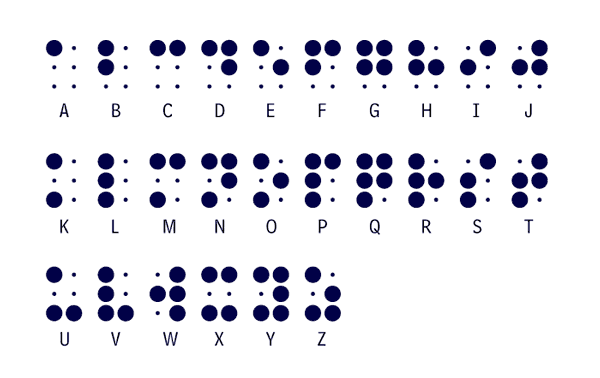This allowed his soldiers to read messages by night without using light and giving away their positions or having to worry about having their messages being intercepted by the enemy.
Louis Braille, born on January 4th 1809,

Shortly after going blind after accidentally hurting his eye with an owl (sharp tool used to make holes) he had been\ handling at his father’s harness shop where he was trying to follow in his father’s footsteps even at the tender age of three, slipped from his grasp and damaging his eye. The wound would be easily fixed in modern day but because of lack of particular medical advances in his time, it got infected and Louis soon found himself completely and permanently blind in both eyes!
However, all was not lost for Louis Braille was an intelligent and determined individual and soon found himself with a scholarship to the worlds only Blind Education facility at the time: The Royal Institute for Blind Youth in Paris at the age of ten!
Alas, even then the main forms of communications given by the teachers was through speech and raised letters the students were required to trail their hands over one by one to read a sentence. A procedure that was both frustrating and time consuming for ten year old Louis Braille and his classmates past and then present.
A year later, eleven (11) year old Louis Braille, came into physical contact with army commander Barbier who shared with him his concept. Louis Braille adopted Barbeir’s twelve (12) dot system into the simplified version of six dots, two cells, three cells to each that we know today
Each Braille character or ‘cell’ is made up of six (6) dots positioned to form a rectangle containing two columns of three dots each.
A dot may be raised at any of the six (6) positions to form sixty-four (64) combinations. Which, when interpreted, included letters, numbers and punctuation marks.
When counting the spaces where no dots are raised the blind or visually impaired person reading it is then able to decipher what is written.
This process is done by keeping one pointer finger at the beginning of a sentence as a place marker then using the pointer finger on the opposite hand to trail along said sentence.
Unfortunately, Louis Braille never lived to see his system being thought to blind students, not even at his old school where he himself thought after graduating and publishing the first ever Braille book!
The Braille system, named after Louis Braille, is a method that is widely used by blind people all over the world to read and write.
This is what the Braille alphabet looks like today:

Fun fact: because there is no ‘x’ in the French alphabet, though each row of letters just adds one more don’t to the sequence, the pattern is broken when one reaches ‘x’ as it was added in later!
above articule writen by: S.Hamlet
foot notes:http://www.afb.org/Braillebug/louis_braille_bio.asp
http://en.wikipedia.org/wiki/Louis_Braille